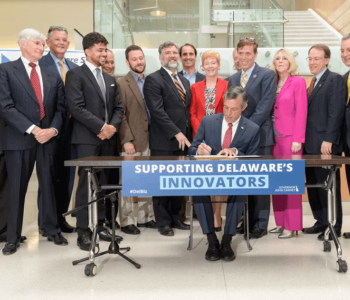Delaware Prosperity Partnership

April 2, 2019
A Delaware Institution on the Business Benefits of Delaware

March 27, 2019
Join us on April 2nd for an Economic Development Update

March 15, 2019
Millennial-Centric Banking App to Hire 30-50 Industry Vets to Drive Growth

February 25, 2019
Wilmington PharmaTech to Expand in Delaware; Planning New Large-Scale Manufacturing Facility

February 12, 2019
Wilmington Office Buildings’ Internet Certification Could Bring Boost to Downtown

February 4, 2019
Study Sees Big Benefits from Investing in Delaware’s Infrastructure

January 25, 2019
Tata Trusts and New America Launch Blockchain Blueprint

January 16, 2019
Chemours Opens New Global HQ in Renovated DuPont Building

January 8, 2019
Business Community Celebrates ‘Delaware Way’ at DSCC Dinner

January 6, 2019
Frederica, Little Heaven Ripe for Economic Development

January 3, 2019
Angel Investor Tax Credit Puts Delaware in the Top 10 for Tech










